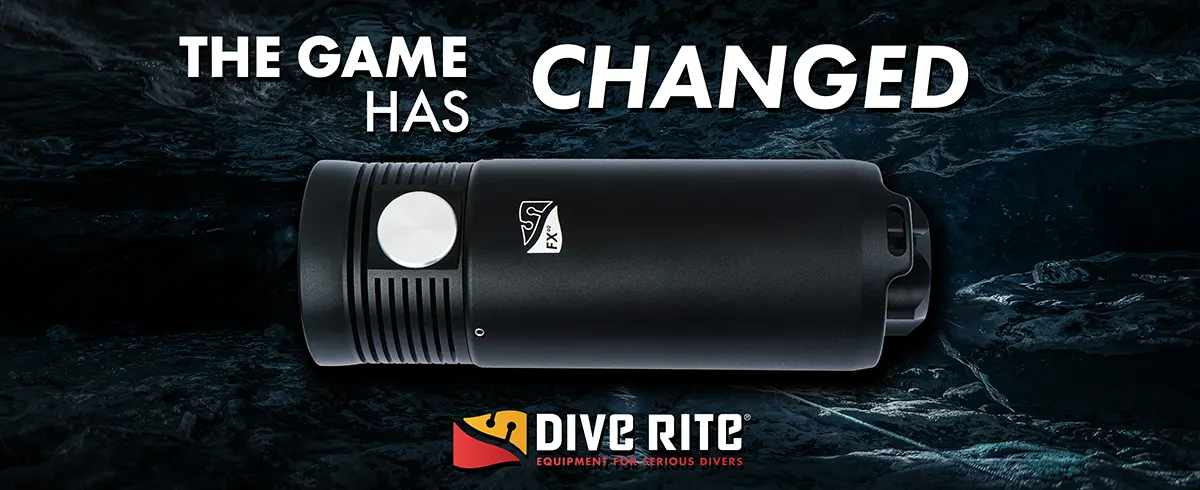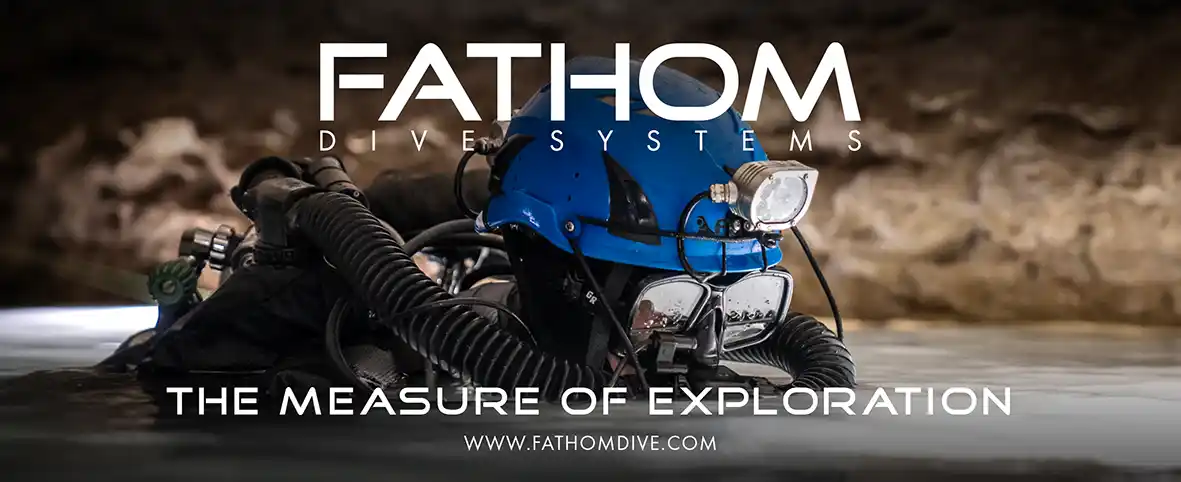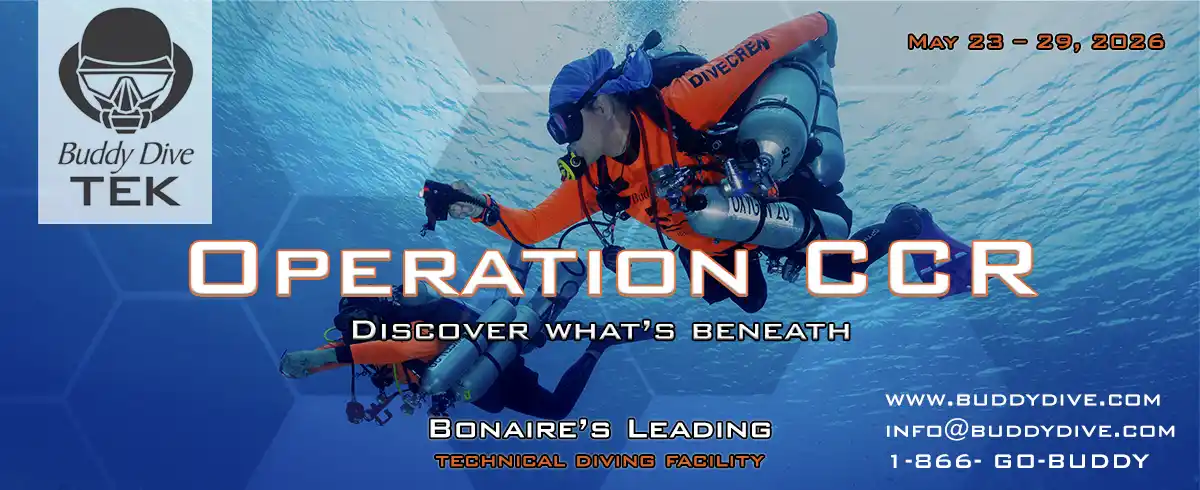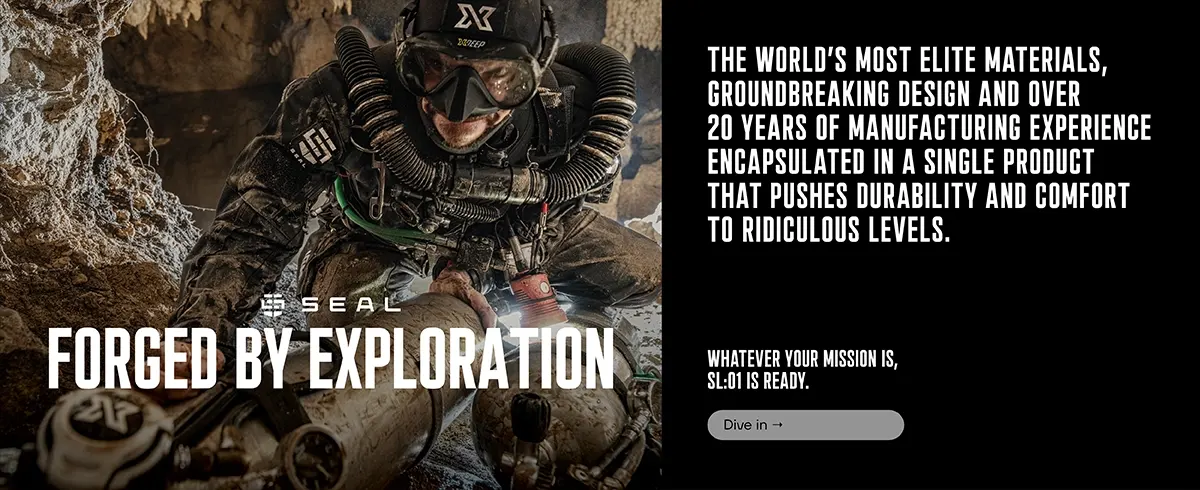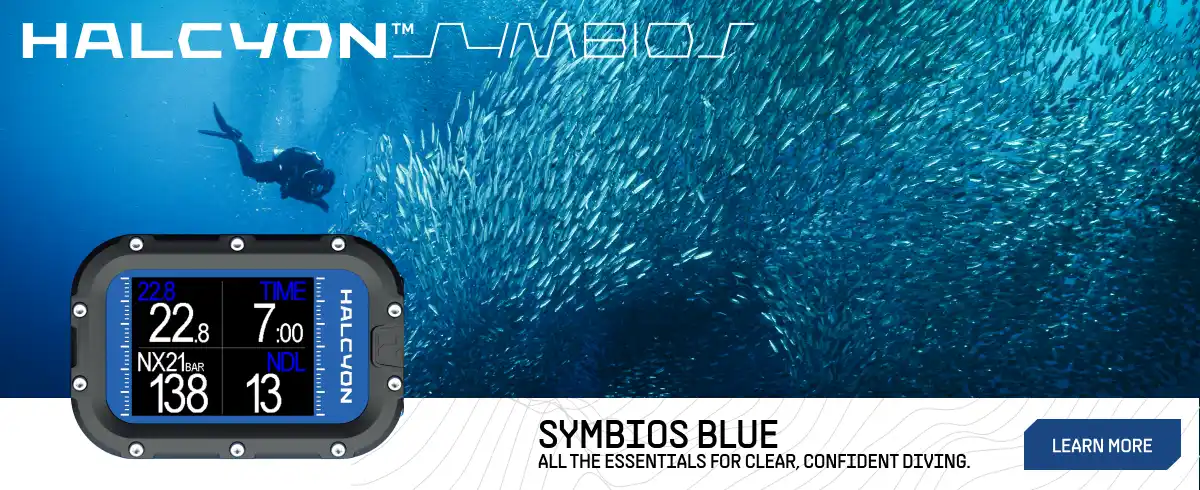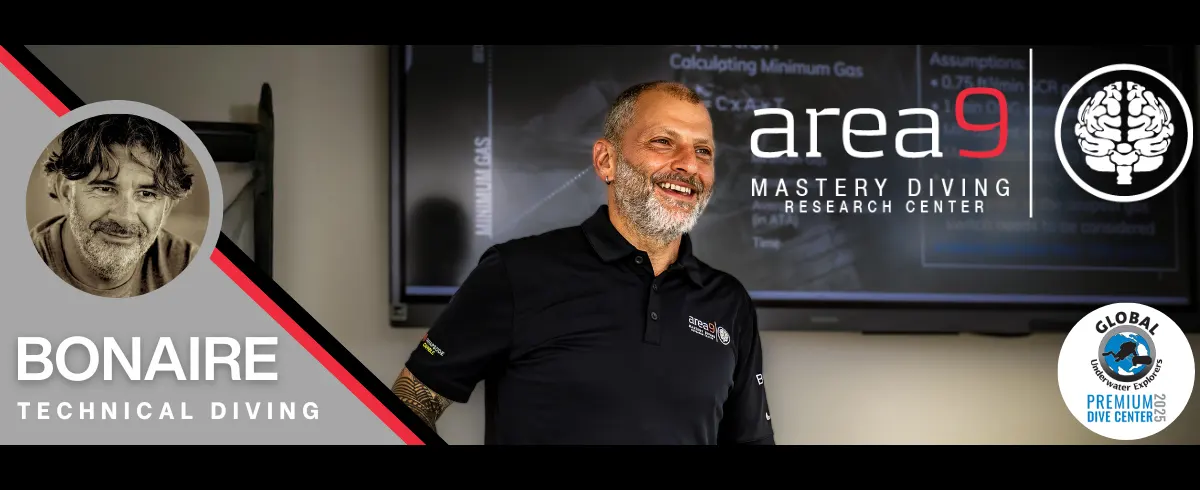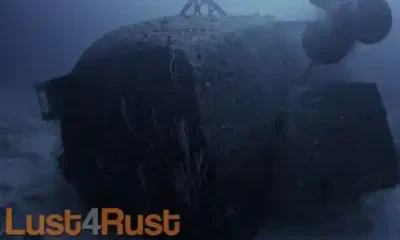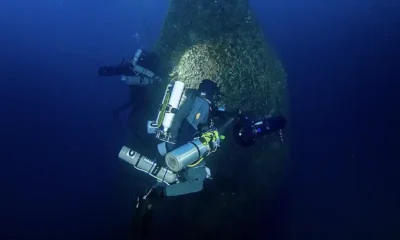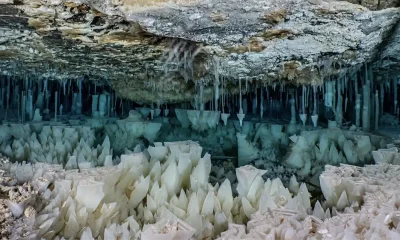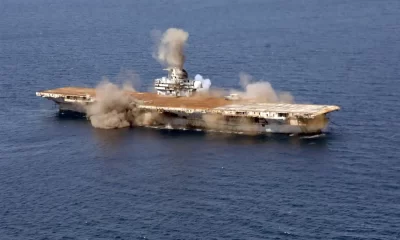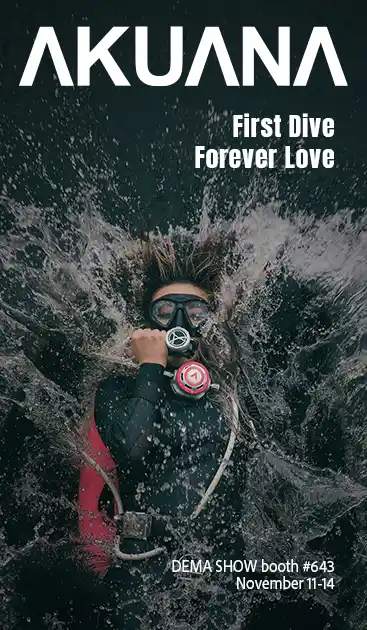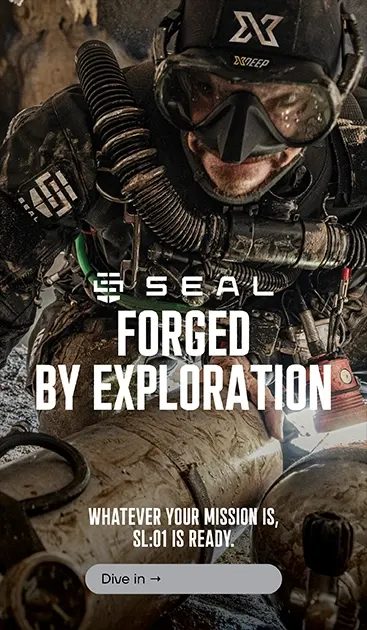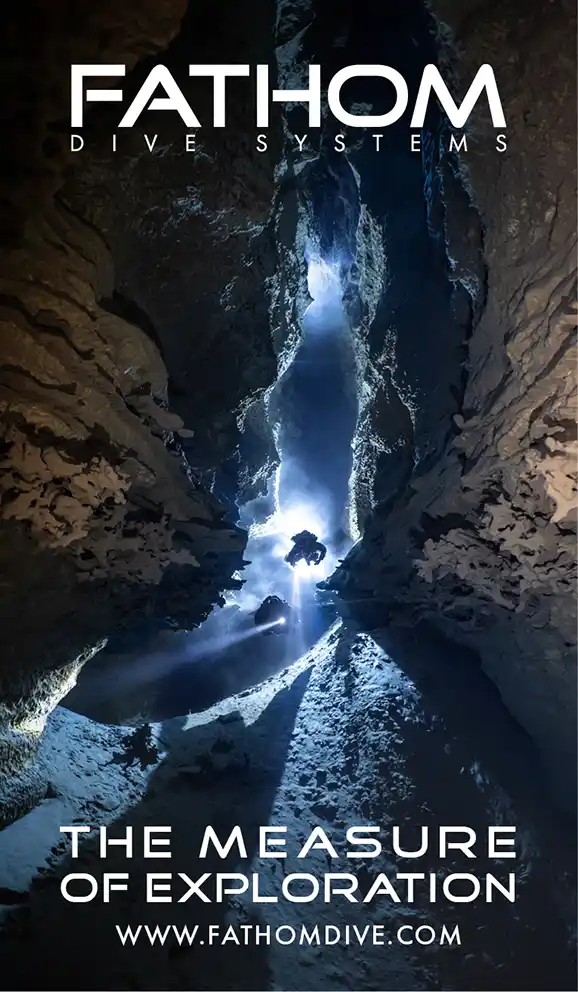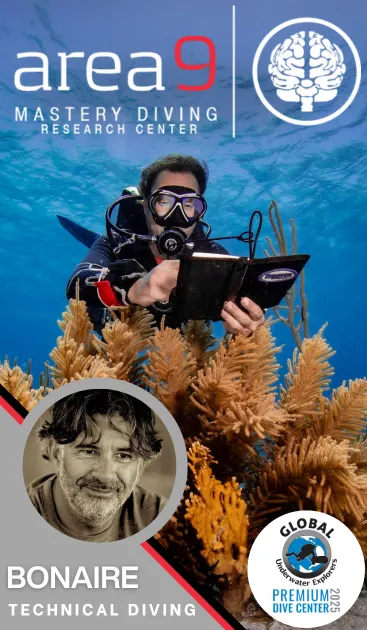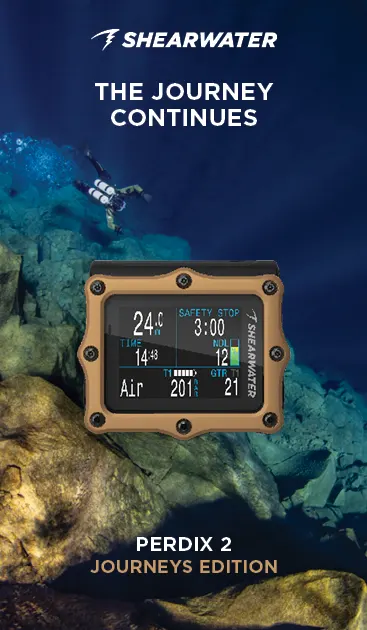

Latest Features
As Time Goes By: Britannic, 109 Years Later
Author–explorer Andrea Murdock Alpini marks Britannic’s 109th year with a fresh descent on the Aegean hospital ship that outlived Titanic in death. Diving alongside an international PHY team, Alpini probes the liner’s shadowed lower decks at 119 m, gauging her steel’s slow surrender and urging Greek and British custodians to green-light focused interior surveys—before this once-majestic giant slips forever from living memory.
by Andrea Murdock Alpini. Photos courtesy of the author unless noted. Lead image: the HMHS Britannic, was turned into Hospital Ship, which served during WWI in 1916.
The HMHS Britannic was laid down in 1911 at the Harland & Wolff shipyards in Belfast. Originally named RMS Britannic, a Royal Mail Steamship, she bore hull number 433. Commissioned by the prestigious White Star Line, she was the younger sister of two other iconic liners: the RMS Olympic and the ill-fated RMS Titanic.
When the First World War broke out, the Britannic was transformed into a floating hospital and tasked with evacuating wounded soldiers from the Turkish front. Here, the bloody Gallipoli campaign had left a trail of suffering. She met her end in the Aegean Sea after striking a mine laid in the Kea Channel by the German submarine U-73. Captain Charles Bartlett tried to beach her, hoping to save the ship by grounding her near the coast—but the sea poured in too fast.
The Britannic sank to the sea floor, settling at a depth of 118 m/387 ft. When her bow struck the sand, the stern was still high above; her great propellers were suspended in the pale water like a ghost not yet ready to vanish.
For decades, the British Admiralty concealed the wreck’s position. Its coordinates were locked away, and the ship remained lost to the world—until 1975 when the legendary explorer and oceanographer Jacques-Yves Cousteau spent a full month aboard his Calypso searching for her. Only in the final days of the expedition did the wreck reveal herself. But, by then, the weather had turned. The sea rose, the wind shifted, and the dives were postponed until the following year.
Mysteries Revealed
In 2025, we will celebrate the 50th anniversary of Cousteau’s discovery of the HMHS Britannic wreck—an anniversary that inspired the PHY Diving team to venture once more beneath the surface, to dive again on the great sleeping leviathan. I had the honor of diving the wreck of the Britannic with an international team that included Italian divers David d’Anna, Marco Setti, and Davide Pezone, as well as Swiss divers Raffaele Mazza and Stella Del Curto, and Greek divers Yannis Tzavelakos and Jorgos Vandoros.

When Cousteau and the crew of the Calypso located the Britannic in 1975, it was more than just a discovery, it was a moment of reckoning. For decades, the ship’s sinking had been shrouded in mystery, speculation, and political tension. Wartime accounts spoke of a torpedo strike. The Germans, accused of committing a war crime by targeting a hospital ship, defended themselves by claiming the vessel had carried troops, not wounded men. The British, the Germans argued, had disguised a warship with white paint and red crosses.

What was the name of the submarine that sank her? Was it true, as some had whispered about the RMS Lusitania, that the HMHS Britannic carried weapons hidden deep in her holds?
Through his dives, his questions, and his relentless curiosity, Commander Cousteau began to peel back the layers of silence, and the Britannic finally began to tell her story. The gap between the diving techniques and technologies of 1975 and 2025 is immense—almost astronomical.
Cousteau’s divers descended using open-circuit trimix systems; they breathed from handcrafted rigs consisting of twin cylinders plus auxiliary tanks custom-built for exploration. There were no buoyancy compensators. Wetsuits were thin and unheated, and lights were dim; both cold and narcosis were harsh, ever-present companions of every dive. Bottom time was extremely limited—just a few minutes spent on the wreck, barely enough to see, to understand, to remember. The divers’ hands were bare against the cold metal of the deep.
Divers decompressed inside a diving bell, but only after skillfully removing their heavy equipment underwater. They detached their twinsets and side tanks with practiced ease before entering the protective chamber suspended in 46 m/150 ft. Once inside, the bell was hoisted back aboard the Calypso, where the divers completed their decompression before emerging, at last, through the hatch—into the world of air, light, and breath.
Fifty years later, technology has taken giant strides, but in the process, perhaps, something of the raw spirit of adventure has been left behind.

The Path to Knowledge
During their 2025 HMHS Britannic expedition, PHY Diving used closed-circuit rebreathers (CCR), drysuits, and high-performance thermal undergarments that kept divers warm throughout their time underwater. The team relied on scooters for propulsion and powerful lights to cut through the darkness of the deep. Bottom times on the wreck now range from 25 to 35 minutes with subsequent decompression lasting around three hours.
This is the true revolution in deep diving: not simply going deep, but staying there.
What made this possible? A body of knowledge built over five decades of research, trials, and theory—refinements in decompression science that now allow divers to adapt to depth with confidence and control.
And the research continues. Expeditions such as these provide opportunities for both exploration and the advancement of scientific research. During the Britannic dives, the PHY Diving team contributed to important studies on decompression physiology and the effects of pressure on the human body. Each day, before and immediately after every dive, each diver completed a series of written assessments and provided urine and saliva samples. These biological samples were then sent to a specialized laboratory for advanced biochemical analysis aimed at extracting key physiological markers.
This is only the beginning. The path from raw data to meaningful insight is long, and it will take several more months to fully process and interpret the information gathered. But the goal of this research endeavor was clear: We sought to deepen our understanding of diver physiology during deep CCR dives—beyond 100 m/328 ft—and to push the boundaries of what we know about the human body’s response to extreme underwater conditions. Professor Gerardo Bosco of the University of Padua and Dr. Simona Mrakic Sposta from the Institute of Clinical Physiology at Italy’s National Research Council in Milan led the research efforts during our expedition.

Slowing Down, Zooming Out
The PHY Diving Team’s mission was a smashing success. The team thoroughly documented the wreck of the HMHS Britannic from stern to bow with high-resolution photographs and full-length video footage. The data gathered during these dives will become an integral part of my ongoing research, and it will be featured in my upcoming book, HMHS Britannic: Leviathan of the Abyss, to be released in December 2025 (in Italian and English).
A previous expedition led by Richie Kohler earlier this year had secured official permits to recover historically significant artifacts from the wreck. And next year, in Athens, something truly remarkable is on the horizon. For the first time ever, select artifacts and structural elements from the Britannic will be publicly displayed. This marks a milestone.
Only through such efforts can the legacy of the great ocean liners endure beyond the slow, inevitable decay that time bestows upon all things.
Preserving these relics is more than conservation; it is a way of keeping the memory of a bygone era alive and giving it new life above the surface.
The Kea Channel is internationally known for its harsh maritime conditions. Northern winds blow strong for most of the year, and the currents are powerful—often unpredictable. Diving this wreck takes time. Waiting becomes essential. You need to know how to be patient, to recognize the moment when the sea allows it, and not waste the opportunity. These circumstances aren’t unique to the Britannic—these traits are shared by all the great wrecks of the world from the Andrea Doria to the Lusitania.
In today’s fast-paced, impulsive world, the ability to manage your emotions—to resist the urge to rush in, to wait for the sea to turn from hostile to welcoming—is more than a skill. It’s a mindset.
We live in an age that demands everything instantly. But these great ocean liners from the past remind us of two fundamental truths: First, time is necessary. Second, distance is essential.

Time helps us understand what truly remains—what endures—once the initial rush of emotion fades. Distance gives us perspective. You don’t approach these wrecks too closely—they are vast, monumental, beyond human scale, requiring gravitas. Only through distance can you begin to comprehend their shape, their space, and the silences that surround them.
The Britannic, the Andrea Doria, the Lusitania—they are ships born of a different century, a slower, more respectful time when attention to detail was still a virtue. And today, these enormous leviathans asleep on the seabed continue to teach us something. Their steel exoskeletons, cloaked in marine growth, ask for three things: respect, time, and distance.
Perhaps that lesson extends beyond diving. Perhaps it’s something we need to remember in our everyday lives—and in our relationships with one another.
In 1969—six years before Commander Cousteau would discover the Britannic’s wreck—the Greek rock band Aphrodite’s Child released “It’s Five O’Clock,” a hauntingly melancholic song that perfectly captures the pathos the Britannic now seems to whisper from the depths of the Aegean Sea.
? It is so hard to believe
That it’s me
That I see
In the windowpane
It is so hard to believe
That all this is the way
That it has to be ?
By 2026, the Britannic will have rested underwater for over a century—110 years to be exact. That’s a remarkably long time for an ocean liner of its stature to remain on the seabed. How much longer will this sleeping giant endure beneath the waves?

The only way to find out is to enter the wreck itself and carefully inspect the lower structures lying near 119 m/390 ft. Down there, everything changes—especially when compared to the upper, well-lit sections around 90 m/295 ft deep.
The Greek Ministry of Underwater Antiquities, alongside the wreck’s British owner Mr. Simon Mills, should allow focused explorations of these interiors. Only then can we truly assess the health of this Goliath of the deep.
It is in these shadowed depths that the fate of the Britannic will be decided.
The destiny of great ocean liners is to slowly vanish from their resting places on the seabed. The Andrea Doria is now nearly flattened, and the Lusitania, due to how and where she sank, has faded even more. The hospital ship Britannic remains the best-preserved among them today.
As time goes by, all of us are destined to disappear. Distance—the passage of time and space—will determine who survives in memory. And even when these sleeping giants eventually fade entirely, their legend will live on, transcending their own era. A single fragment, recovered and forever housed in a museum case, will speak for the whole. That is why recovering artifacts matters. The ship may disappear, but its memory will endure—immortal.
History does not die, as long as it is passed on. History has many fathers—truth, on the other hand, is often a victim of its own time. There is no future without memory.
Aphrodite’s Child seemed to echo this very thought in the 1970s when they reimagined Johann Pachelbel’s 17th-century Canon in D major in their song ? Rain and Tears—a haunting, almost pop-like anthem of the twentieth century.
We study the past of these ocean liners so they may speak to us about our own future. Beautiful ships. Magnificent wrecks.
DIVE DEEPER
InDEPTH: DIY: Braving the Britannic Without A Golden Ticket (2023) By Brett Eldridge with Ben Lair.
InDEPTH: Gas Planning With a Chest-Mounted Rebreather (2023) by Justin Judd.
InDEPTH: Diving the Britannic- A Personal Account (2019) by Jarrod Jablonski

Andrea Murdock Alpini is a TDI and PSAI technical trimix and advanced wreck-overhead instructor trainer based in Italy. He is fascinated by deep wrecks, historical research, decompression studies, caves, filming, and writing. He was awarded the Golden Trident as scuba explorer and researcher in June 2024.
Andrea holds a Master’s degree in Architecture and an MBA in Economics for The Arts. Andrea is also the founder of PHY Diving Equipment. His life revolves around teaching scuba diving, conducting expeditions, developing gear, and writing essays about his philosophy of wreck and cave diving.
He published several books, including Deep Blue: storie di relitti e luoghi insoliti (2018) and IMMERSIONI SELVAGGE (2022). Recently, he published a new wreck history: ANDREA DORIA: UN LEMBO DI PATRIA (2023). His most recent book, NOMADE DEL PROFONDO (2025), features stories of cave/mine diving, wrecks, and three interviews with ‘the oaks’ pioneering contemporary scuba diving. He runs explorations on deep south wrecks of Italy on board his Raffio.





